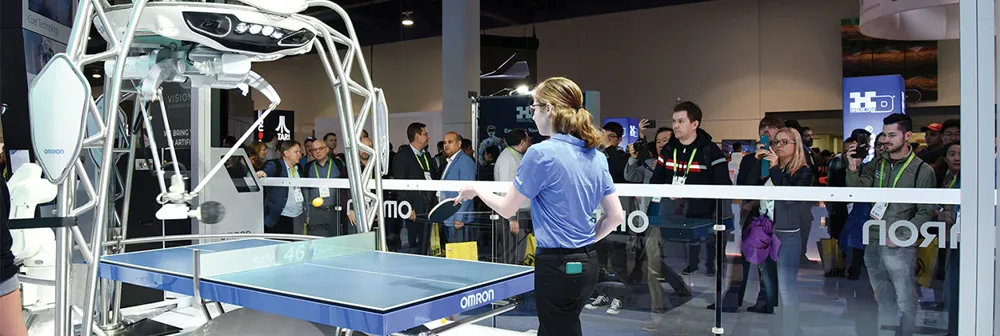Learning Robots Offer a Glimpse of the Future
July 8, 2018
- Author: Murray Slovick Contributing Author


May/June 2018
More articles in this issue:
If I said that modern robots can detect obstacles, navigate around them and sensitively handle objects with their grippers, most people would agree.
But what if I then suggested that robots also can learn on the fly? That they can do things you want without having to be told? Does that surprise you?
It shouldn’t. Deep learning, the basis for artificial intelligence (AI), is enabling robots to learn much more quickly and effectively, perform tasks autonomously and find their way around unfamiliar environments.
For example, by leveraging AI and machine learning, the Aeolus Robot, unveiled in prototype form at CES 2018, can recognize thousands of objects and learn its owners' preferences, such as their favorite drink. It can also pick up toys off the floor and put them away in their storage areas and use a vacuum to clean floors. Aeolus can also determine things like a person’s change in posture, which might occur if an elderly person is falling or experiencing a seizure—and then call for help. The robot is also integrated with voice-command systems like Amazon Alexa and Google Home. Named after the Greek god of the wind, the Aeolus Robot is roughly the height and weight of a 12-year old and is expected to be available for purchase in the fourth quarter of 2018.
Robots have always been very effective for precise, repetitive work, but for the most part they were traditionally used only in carefully controlled settings. However, robots are now moving out of the secure areas of industrial plants and collaborating directly alongside human co-workers. Known as “collaborative robots,” these machines work alongside humans on light manufacturing lines, and if a human might need to enter its workspace, can be trusted not to injure the interloper. Many of these smaller, lighter robots can fit on a workbench or counter. Their robotic arms have actuated joints that can be fitted with any number of different tools.
An example of how robots can interact in real time with humans was demonstrated at CES 2018 by Omron, whose AI-powered table tennis-playing robot Forephus took on human opponents. Forephus has a companion arm that can serve up balls in the air and a five-axis motor system lets it swing the paddle. Omron says the machine can detect the ball’s speed and rotation up to 80 times per second, which allows it to predict the ball’s trajectory. An AI-assisted motion controller tells the machine how and where to hit the ball. Omron says the robot can adapt its playing style and approach based on the skills and technique of its opponents.
What’s Next in Robotics?
- Robots are becoming smaller, lighter, cheaper and more flexible to use. Thanks to the lower price of sensors and the sheer volume of robots being produced, affordability is a trend expected to continue.
- Robots will be leveraging the cloud to do processing and exchange information with other robots, accelerating the learning process, and allowing a robot to benefit from the efforts of others.
- Advances in big data will help the robotics community deal with the massive amount of information generated by sensor-rich robots.
- New deep learning techniques and algorithms will enable robots to learn much more quickly and effectively than in the past.
It isn’t hard to see why some believe the timing is ripe for robotic home companions and playmates.
Join our community of innovators and shape the future of technology.



